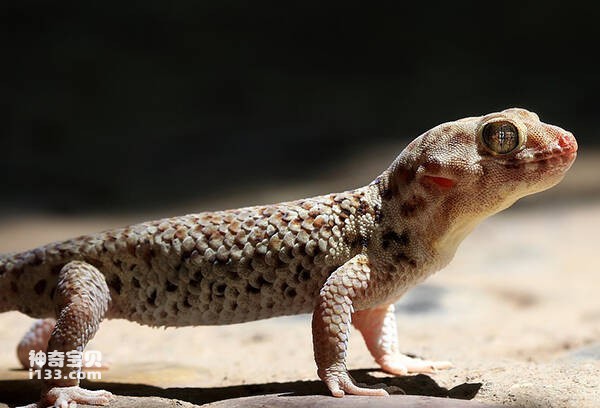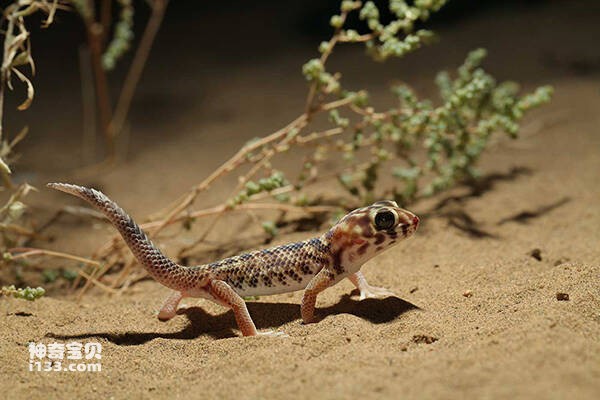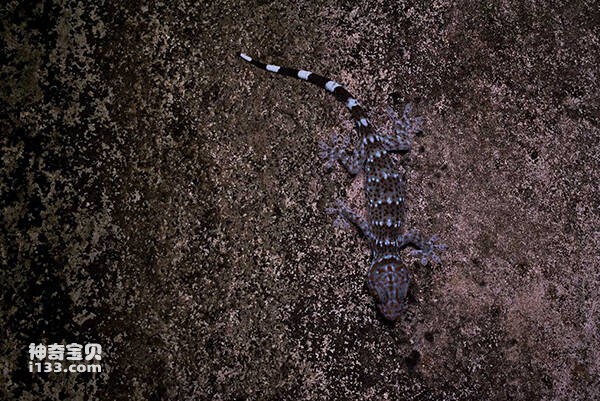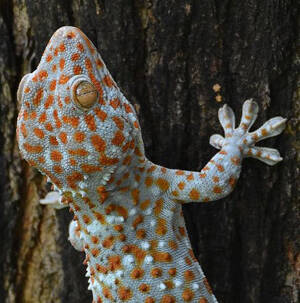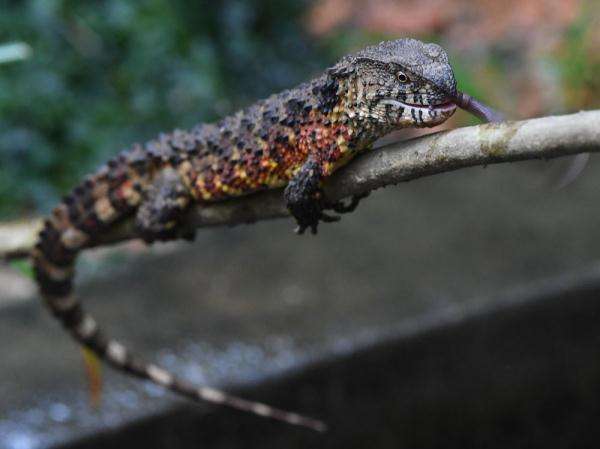Heloderma suspectum
IUCN
NTBasic Information
Scientific classification
- name:Heloderma suspectum
- Scientific Name:Gila Monster, American Gila Monster, Gila Monster,Gila Monster, Blunt-tailed Lizard, Aztec Lizard
- Outline:Lizardia
- Family:H.suspectum Heloderma Helodermatidae Chordata
Vital signs
- length:48-56cm
- Weight:900-1200kg
- lifetime:20-30years
Feature
The venom is a neurotoxin
Distribution and Habitat
Southwestern United States and northwestern Mexico. Its range extends from extreme southwestern Utah and southern Nevada to adjacent southeastern southern California, southern Arizona, southwestern New Mexico, and much of Sonora to the northern part of the Mexican state of Sinaloa.
Appearance
There are usually 4 to 5 black stripes on the tail, the snout to the cheeks are black, the head is covered with large bead-like scales, the tongue is dark and forked, and it spits out its tongue like a snake to detect the surrounding smell.
Details
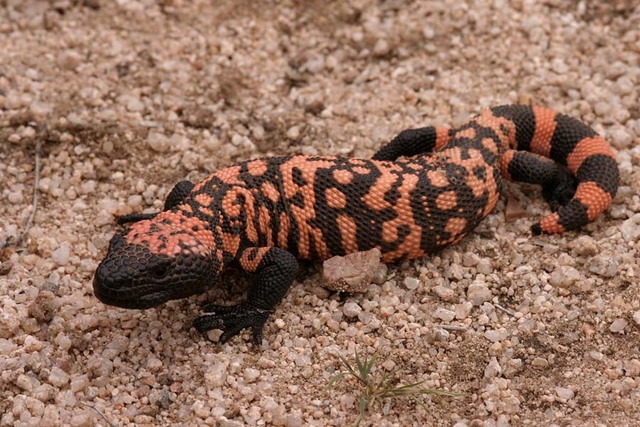
The Gila Monster (scientific name: Heloderma suspectum) is also known as the American Gila Monster, the Gila Monster, the Gila Monster, the Gila Monster, the Aztec Lizard, and the "Gila Monster" in English. It is named after the Gila River Basin. It is 48-56 cm long, and most of the ones we see are about 45-50 cm. The weight is generally 900-1200 grams, and the largest individual can reach 2300 grams. It is one of the few dangerous lizards. Its toxicity is neurotoxic. If bitten, it will cause paralysis of the limbs, lethargy, shock, vomiting and other symptoms. The whole body is like a big gecko, with a thick and heavy body and a short and thick tail, which is an organ for storing fat. Because of this special energy storage mechanism, four to five full meals in the wild are enough for them to barely support a year. The body is distributed with small and non-overlapping scales; the limbs are short and powerful, with 5 slender claws. The head is large, black at the front and yellow at the back. The eyes are small, dark, with round pupils; the tongue is pink or purple and forked in the middle. The face is black, with small bead-like scales. The head is large, black at the front and yellow at the back, with some black spots; the teeth have sharp tips and obvious longitudinal grooves. The tongue is pink and forked in the middle; the body color is colorful and dark, with yellow, pink, light red or black markings. The spots or bands of the reticulated Gila monster are broken up to form a net-like pattern. The spots of the black-banded Gila monster usually form a continuous band on the back.
Distributed in the western and southern states of the United States, Arizona, California, Nevada, Utah and New Mexico, centered in the Mojave Desert and the Sonora Desert, extending into the southern Mexican state of Sonora.
The habitat environment is relatively arid, with altitudes ranging from sea level to 5,100 feet (1,600 meters). Such as desert bushes, semi-desert grasslands, oaks, juniper bushes, sand, gravel, rocks in semi-arid areas, vegetation such as cacti, cacti and prickly pears, etc. in desert areas. They like to choose canyons or rock slopes, ground holes, and caves made of mouse bones as hiding places. They like to dig caves. If conditions permit, the padding can be padded to a sufficient thickness for digging, and the temperature is controlled between 30-35 degrees.
The venom of the Gila monster is a neurotoxin. If bitten, symptoms such as paralysis of the limbs, lethargy, shock, and vomiting will occur, but it is usually not fatal. The fangs and venom glands of the Gila monster are located in the lower jaw. The fangs are groove teeth. The venom seeps into the saliva from the grooves and enters the wound. For each bite, the Gila monster only uses one-third of the venom. Therefore, both the amount of venom entering the wound and the speed of penetration are relatively small and slow. Although the mortality rate for healthy adults is not high, you still need to be very careful, especially because the bite force of the Gila monster is not only very strong, but also it will not let go of the bite, but will continue to bite, causing serious wounds.
The reason for the severe pain of being bitten comes from two aspects: first, the teeth of the Gila monster are very sharp, and when it bites, it will bite hard and not let go. Second, the venom of the Gila monster is very special. It can block collagen and venous septum, and the final result will be "inflammation and extreme pain." When the pain is extreme, the compounds in the venom can cause sweating, diarrhea, vomiting and even lower blood pressure.
The Gila monster hides in underground caves 90% of the time. The Gila monster has a slow metabolism, so it does not need to eat all the time like smaller and more active lizards. It mainly feeds on mice and eggs, and also preys on small mammals and birds. They are first-class climbers and often climb trees in the wild to prey on young birds or bird eggs. Although they move slowly and clumsily, their bite is not only fast but also powerful. Their prey includes eggs, small mammals, and young birds, which they usually swallow whole. When hunting, they poison the prey with venom in their mouths and then slowly swallow it, which can kill two birds with one stone in terms of water and nutrition. After a full meal, the Gila monster will rest quietly until it needs to eat again or sunbathe, and cannot defecate.
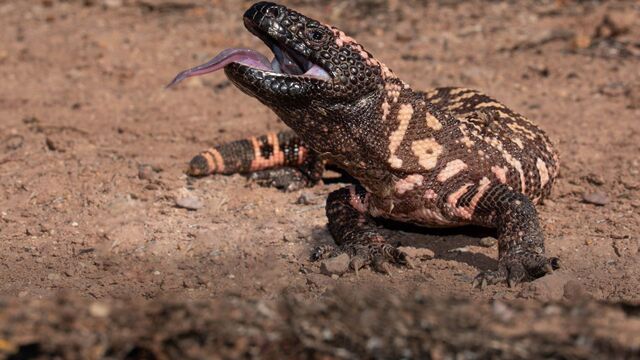
Gila monsters have the habit of hibernation. They wake up from hibernation in January and February every year, and they begin to enter the breeding season in May and June. Males will find females by smell and start courtship. If the female refuses, it will attack the male and leave. If both parties are in love, they will begin to mate. The Gila monster mates in the same posture and movements as other lizards, but it lasts longer, which may be 15 minutes or two and a half hours.
In July and August, females begin to lay eggs, which they bury in a sand hole about 13 cm deep. Females lay 2 to 12 eggs each time (but usually around 5). Their incubation period is generally 9 to 10 months. The incubation period is generally 10 months, and the young lizards can reach 16 cm in length after hatching. The venom is terrible, and the young lizards need to be self-reliant after they are born.
If they grow up well, the Gila monster can live for more than 30 years, making it a very long-lived lizard.
The venom of the Gila monster contains a substance that can treat diabetes. More than a dozen proteins and toxins were extracted from the saliva. Among them, a protein called exendin-4 was found to be 50% similar to a hormone in the human digestive tract. This hormone in the human digestive tract can stimulate insulin secretion when blood sugar rises, thereby lowering blood sugar; it has no such effect when blood sugar is low, so it will not cause hypoglycemia. A 3-year study found that exendin-4 helps patients with type 2 diabetes maintain healthy blood sugar levels and has the effect of losing weight.
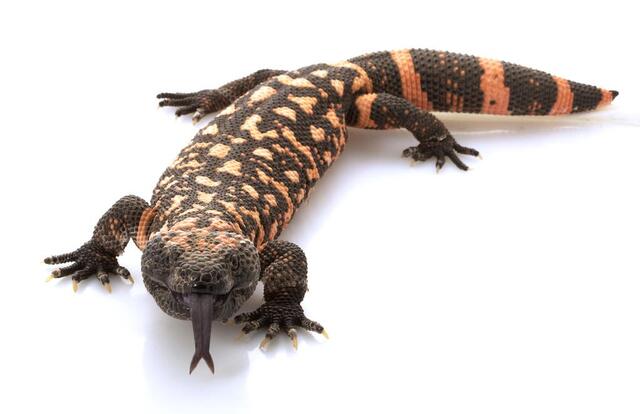
Wild populations are currently listed as protected species and capture is prohibited

